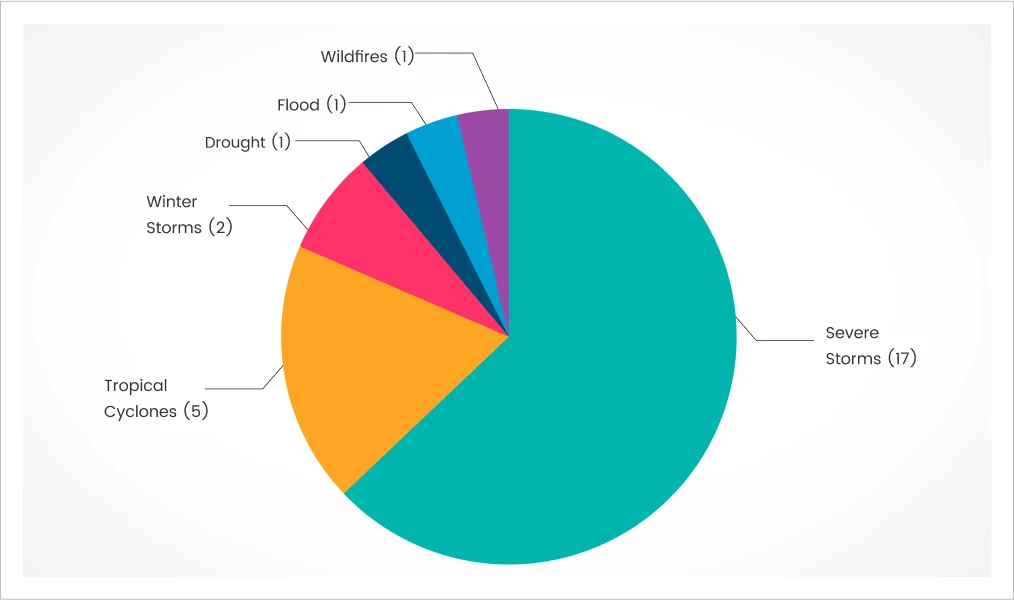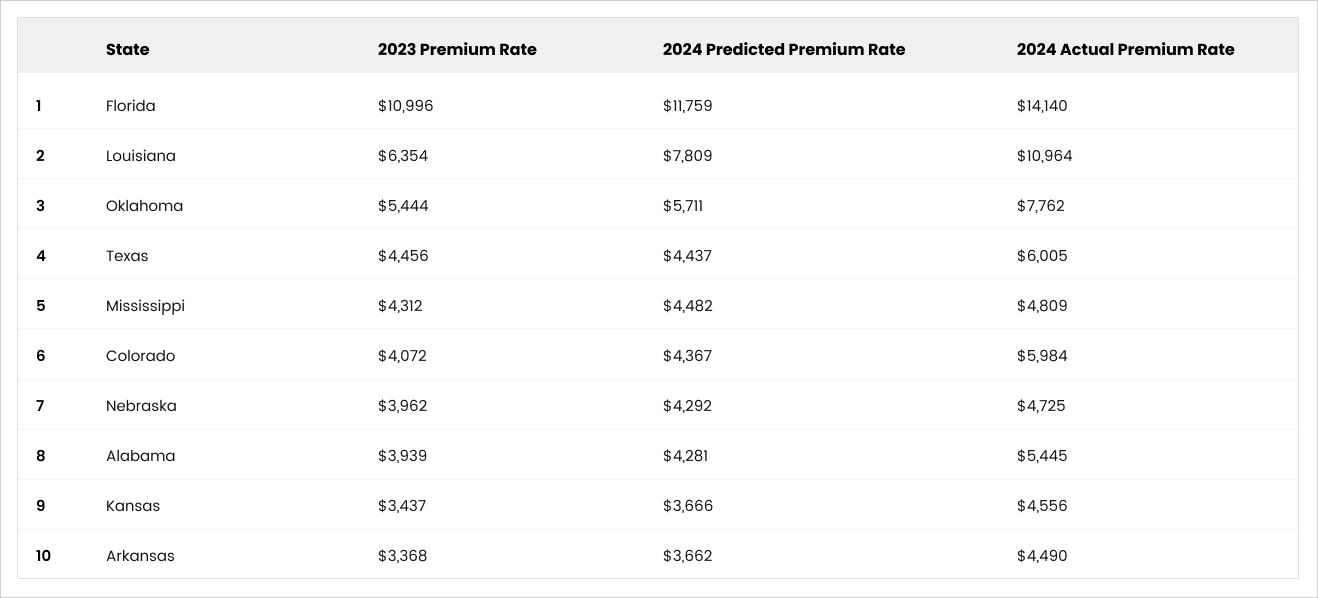
Study data confirms that actual 2024 home insurance rates significantly outpaced initial projections. Florida shows the highest differential between actual 2024 rates ($14,140) and projections ($11,759), with a huge gulf between Texas’ 2024 actual rate ($6,005) and the projection ($4,437). There are multiple reasons for the rises beyond the increasing weather events: rising material costs and regulatory changes are also key factors
1. Additional Reasons For Homeowner Premium Increases
- Five of the eight most expensive states for home insurance are situated along the vulnerable Gulf Coast. The region is extremely susceptible to hurricanes, which cause more financial damage than any other type of natural disaster.
- Labor shortages in the construction industry have played a major role in driving up insurance premiums in recent years. As of August 2024, there were 368,000 open construction jobs in the U.S., more than twice the number forecasted by the Bureau of Labor Statistics. This workforce gap drives up rebuilding costs and claim payouts, which in turn pushes premiums higher for homeowners across the board.
- Inflation has only made matters worse, contributing to surging material prices and ongoing supply chain disruptions.
- Even first-time claimants aren’t immune. In states hit by catastrophic events, a single large claim can still trigger premium increases of 7% to 10%.
2. Some Ways To Reduce Your Homeowner Insurance
Apart from moving to a state offering low insurance premiums, there are measures you can take to reduce your rates. These include increasing your deductible, bundling your coverage, applying any available discounts, making weather-resistant updates to your property, improving your credit rating, and removing any inessential coverages. By working with an independent insurance agent, you can make sure you get the very best available premium rate.
3. Legal Recourse And Litigation Trends
- Homeowners looking to take legal action over denied insurance claims often face a maze of regulatory challenges, as consumer protections differ drastically from state to state. Policyholder rights, coverage guarantees, and options for financial recovery vary widely, leaving some homeowners far more vulnerable than others. While certain states enforce strict claim review standards, others give insurers greater leeway to reduce or deny payouts with minimal oversight.
- Lawsuits against insurers are becoming more common as homeowners push back against unfair practices, but many still struggle to access the legal support needed to pursue the compensation they deserve.
Here are a few notable examples of consumer action taken in response.



